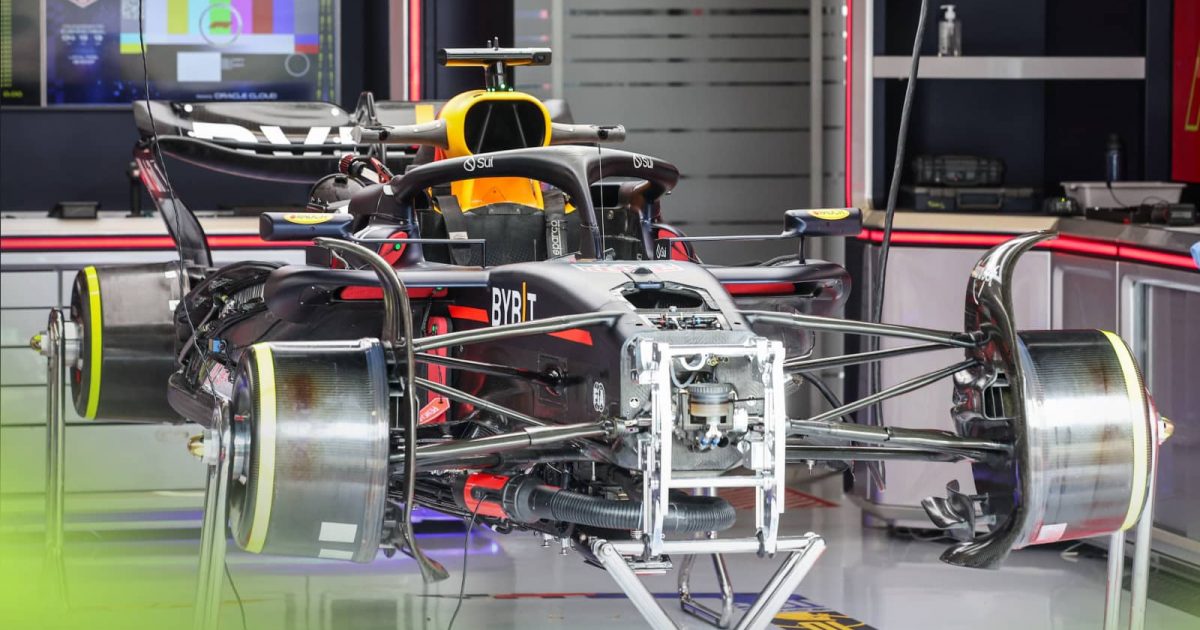
RED BULL AND MERCEDES GO AGGRESSIVE WITH REAR WINGS FOR AUSTRIAN GRAND PRIX
After a brief break, the F1 2024 season is gearing up for another Sprint weekend in Austria, home to the Red Bull Racing team.
This technical track – known for its high altitude, few corners, and always thrilling battles – is set to deliver another exciting race. Following last weekend’s race in Barcelona, the Red Bull Ring presents a completely different challenge. Engineers face the tough task of adapting quickly to the new conditions.
F1 tech preview: 2024 Austrian Grand Prix at Red Bull Ring
Characteristics of the Red Bull Ring
This weekend, the Red Bull Ring hosts the third of six Sprint weekends this season.
Teams will have only one practice session, giving them much less time to fine-tune their car setups. The switch from a very different track last weekend adds an element of surprise and excitement.
How McLaren and Ferrari upgrades brought F1 2024 to life
👉 Uncovered: The mighty McLaren MCL38 upgrades threatening to dethrone Red Bull’s RB20
👉 Uncovered: Ferrari’s major SF-24 upgrades that could power them to Monaco win
With a rich racing history, the Red Bull Ring is well-known to all drivers. It’s one of the shortest tracks at just 4.3km and 10 corners – the fewest of any current circuit.
This means qualifying lap times are around 64 seconds, leading to extremely close qualifiers and heightened excitement for viewers.
Formerly the A1 Ring, this track demands maximum driver precision due to its technical nature. The uphill and downhill sections through corners affect braking and balance.
We’ll have three DRS zones, expected to create more overtaking opportunities, which are typically challenging here.
Pirelli has chosen the softest compounds for the Austrian GP with C3 as hard, C4 as medium, and C5 as soft.
Managing tyre degradation on this track is crucial and could determine Sunday’s winner. Moreover, McLaren excels in this area, making them the team to watch in both Sunday race and Sprint race.
Last year at this grand prix, we saw an absurdly high number of track limit violations during qualifying. To prevent this issue this year, changes have been made, including more prominent kerbs on the final corner of the track.
Additionally, the FIA has mentioned new systems for monitoring cars and these violations using artificial intelligence. It will be interesting to see if the problem is resolved and how drivers will react to the changes on the track.
Teams’ aero preparations
Teams have opted for medium downforce packages due to Austria’s long straights.
As usual, Red Bull has chosen an aggressive setup for both the lower and upper elements of the rear wing. Their car’s high aerodynamic efficiency allows this without significant top speed loss on straights.
Mercedes has also opted for a similar approach, but with a less-angled second element compared to their rivals.
Meanwhile, McLaren and Ferrari have similar setups, with Ferrari’s lower flap being more pronounced. Given the track’s high altitude and lower air density, engineers can use a more aggressive aerodynamic setup without severely impacting top speed.
Considering the characteristics of the track, in Austria we can expect that teams who had good pace in Canada might also have an advantage over their rivals here.
An additional factor is the high temperatures which, combined with the thinner air, make cooling the brakes and the power unit more challenging.
Therefore, teams will certainly bring additional upgrades to their cars to more effectively adapt to these conditions.
Which teams can we expect to perform well?
As mentioned, McLaren is a strong contender at the Red Bull Ring.
They manage tyre degradation exceptionally well, giving them an edge over their rivals.
Their race pace with low fuel loads has been impressive in recent races and qualifiers, too. If the British team continues their progress, they might even challenge for the Constructors’ title by the year’s end.
Ferrari shouldn’t be discounted despite underperforming in the last two races.
The SF-24 performs well on high-altitude tracks and they have had good results here. 2022 winner Charles Leclerc often delivers something extra at this venue, making him a potential dark horse. Ferrari’s success will depend on tyre management and strategy.
Mercedes is also in the mix and could join the podium fight.
Max Verstappen and Red Bull remain the favourites though. To be fast at the Red Bull Ring, a stable rear end is crucial and the RB20 excels in this area.
Expect a thrilling race!
Read next: Five Austrian GP questions: Carlos Sainz twist, McLaren v Red Bull and big track changes
2024-06-27T18:38:46Z dg43tfdfdgfd